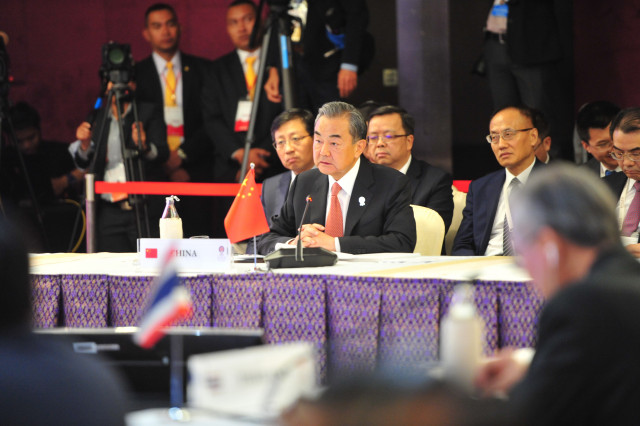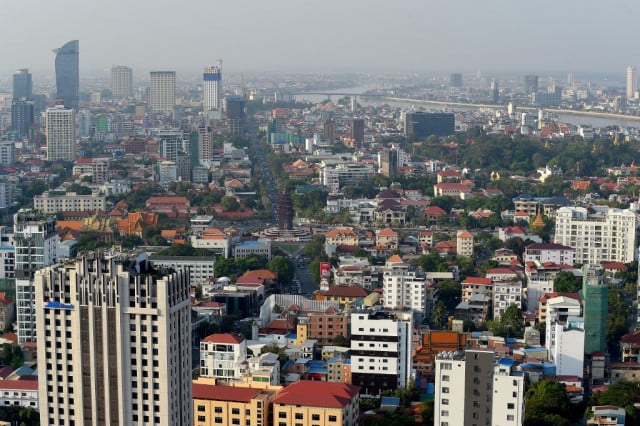Burn or Bury? Cambodia’s Fabric Waste Problem

- By Phoung Vantha
- May 22, 2023 2:09 PM
PHNOM PENH – A new report has highlighted the thousands of tonnes of waste fabric produced by Cambodia’s garment industry and the problems of disposal in landfill or burning in brick kilns.
The report says there is a thriving unregistered industry for end-of-roll remnants and that cutting waste moves through a well established supply chain until it is buried or burned.
It suggests also that an industrial textile waste recycling facility could be viable.
The report was written by Hanna Guy, Consultancy for FABRIC, Fostering and Advancing Sustainable Business and Responsible Industrial Practices in the Clothing Industry in Asia for Deutsche Gesellschaft für Internationale Zusammenarbeit (GIZ).
GIZ works on behalf of the German Federal Ministry for Economic Cooperation and Development.
FABRIC addresses sustainability in the textile and garment industry in its social, economic and environmental dimension.
This project was designed to map this waste stream while providing visibility into stakeholders, and consumption and purpose of usage across the various pathways.
“Insights will contribute to a broader feasibility study determining if there is demand for domestic industrial textile recycling,” it says.
The research was carried out in February and March 2021 involving formal and informal stakeholders and estimated quantities of wastage where possible.
“When consolidated, these segments will influence and contribute to a business model viability review,” it says.
“Many stakeholders, particularly in factories, expressed knowledge that the current process of textile waste is complicated and controversial, especially regarding sale of waste. “
The report says textile waste from the garment Industry is formally disposed of on landfill sites belonging to licensed waste disposal companies, however there is a thriving unregistered industry.
“In addition to being disposed of on landfills, cutting scraps are being burned, both at factories and brick making sites, exported, and in very few cases, recycled,” it says.
“Evolution of the Cambodian garment industry will need to occur to ensure it remains competitive,” it says.
The report also presents opportunities and economic, government and administrative influences and conventional practices.
“Positive opportunities such as large volumes of waste available in-country and the development of national waste management strategies suggest the viability of establishing an industrial textile waste recycling facility, a first step in the application of circular practices for the industry.
“However, shifting from the current deeply embedded practices will require a balance of education, brand influence, government policy development and implementation, and financial incentive.”
It says China has implemented a series of waste management reforms over recent years which included the ban on import of textile waste in 2017.
By the end of 2020, import of all waste to the country had been banned. Following in the footsteps of China, Malaysia and Vietnam had slashed scrap import quotas.
Countries such as Bangladesh have successfully launched advanced textile recycling schemes to create a circular economy within the garment industry and reduce waste to landfill.
It says policies are in place to regulate waste management in Cambodia. Among other things, these mandate the subcontracting of waste disposal to private sector contractors.
Cambodia’s industrial waste comprises approximately 60% of textile and garment waste. Most of this is cutting waste.
The report says demand for cutting waste decreased in 2019 due to waste import regulatory changes in China, broader awareness of the impacts of brick kiln fabric burning and increased difficulty of licensing for export to Vietnam.
The report also points to the sale of fabric waste for burning in brick kilns, causing harsh environmental degradation and confronting social impact.
“Widely unregistered and notorious for breaking national laws and global human rights agreements, the industry is unregulated and consumes significant volumes of natural resources,” the report says.
“The brick industry has changed significantly and continues to move toward more sustainable and energy efficient fuel sources, however this does not discount the kilns’ significant positioning as a stakeholder in Cambodia’s textile waste pathways map or the detrimental effect they have on the environment and communities involved in the sector.”















